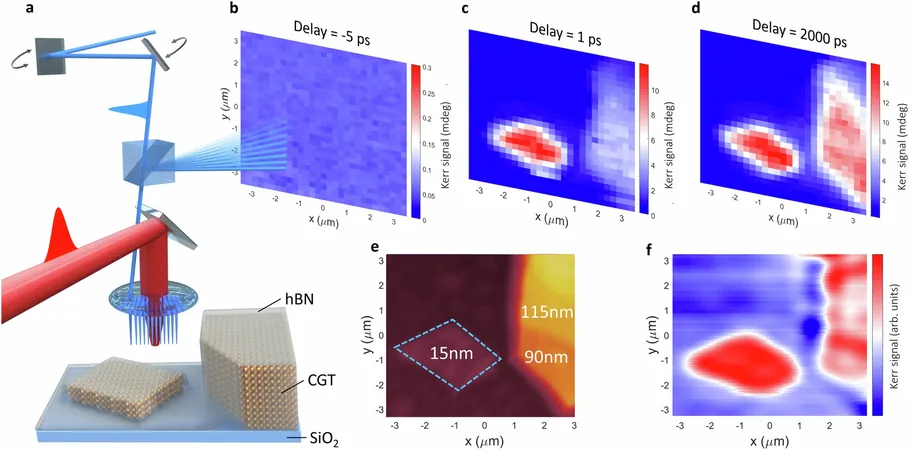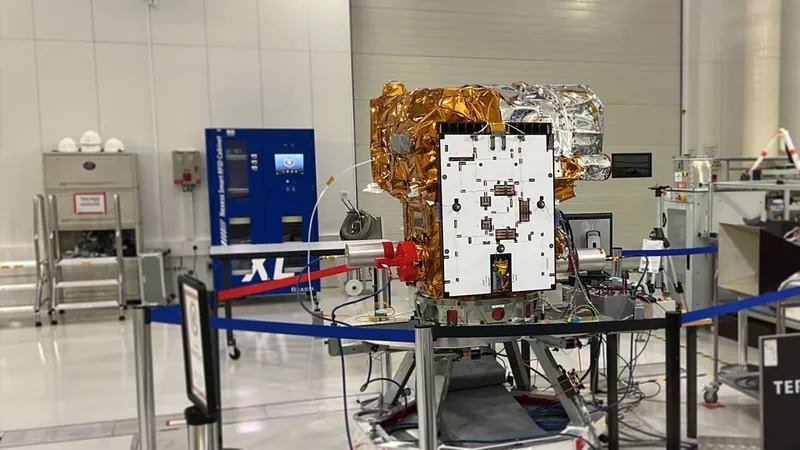
Groundbreaking Research Transforms Heat into a Game-Changer for Magnetism in 2D Materials
2025-03-27
Author: Mei
Introduction
In an exciting leap forward, scientists from the University of Exeter have unveiled a pioneering technique that harnesses heat to control magnetism in two-dimensional (2D) materials. This breakthrough could revolutionize the creation of ultrafast, laser-driven storage devices, heralding a new era in data storage technology.
A Shift in Perspective on Heat
Published in the prestigious journal Nature Communications, this innovative study strategically shifts the narrative surrounding heat in electronic devices. Traditionally viewed as a pesky byproduct of power consumption, especially in semiconductors, heat management has posed a significant challenge as electronic devices continue to shrink in size. However, this groundbreaking research repurposes heat from a challenge into an opportunity for advancement.
The Research Methodology
The team’s novel method exploits the unique characteristics of 2D van der Waals materials, which feature weak interlayer bonds. This allows these materials to exhibit notably low thermal conductivity and highly directional heat dissipation. Led by Dr. Maciej Dąbrowski, the researchers developed a precise approach to manipulate heat flow and magnetic properties, achieving results on remarkably short timescales of just hundreds of femtoseconds.
Using laser pulses of specific wavelengths to heat the material, followed by probing pulses to monitor changes, the researchers performed real-time assessments of temperature and magnetization dynamics in atomically thin materials. This methodology not only set a new standard for precision but also achieved sub-picosecond temporal and sub-micron spatial resolution.
Significant Findings
A standout moment in the study was the ability of the team to manipulate the thickness of the magnetic layers significantly. This alteration notably speeds up the heat dissipation rate and enhances the magnetization recovery process, paving the way for the development of ultrafast data recording devices that operate solely on laser pulses—effectively eliminating the need for external magnetic fields.
Implications of the Discovery
The implications of this discovery are profound. The capability to regulate magnetism through laser pulses, independent of external magnetic influences, holds the promise of producing highly efficient non-volatile memory devices—potentially faster, smaller, and more reliable than current technologies.
Conclusion and Future Directions
Dr. Dąbrowski emphasized the significance of this research, stating, “This opens up exciting possibilities for thermal engineering of future devices on an ultrafast timescale. The robust magnetic domain memory effect we observed is unique to 2D van der Waals magnets, unveiling new potential applications in ultrafast magnetic recording and quantum technologies leveraging electron spin.”
As the field progresses, this breakthrough not only marks a milestone in material science but also reignites the potential for revolutionary electronic devices that will reshape our interactions with data. This research represents the backbone of future innovations that could tap into the full capabilities of 2D materials, pushing the boundaries of speed and efficiency in technology as we know it.




 Brasil (PT)
Brasil (PT)
 Canada (EN)
Canada (EN)
 Chile (ES)
Chile (ES)
 Česko (CS)
Česko (CS)
 대한민국 (KO)
대한민국 (KO)
 España (ES)
España (ES)
 France (FR)
France (FR)
 Hong Kong (EN)
Hong Kong (EN)
 Italia (IT)
Italia (IT)
 日本 (JA)
日本 (JA)
 Magyarország (HU)
Magyarország (HU)
 Norge (NO)
Norge (NO)
 Polska (PL)
Polska (PL)
 Schweiz (DE)
Schweiz (DE)
 Singapore (EN)
Singapore (EN)
 Sverige (SV)
Sverige (SV)
 Suomi (FI)
Suomi (FI)
 Türkiye (TR)
Türkiye (TR)
 الإمارات العربية المتحدة (AR)
الإمارات العربية المتحدة (AR)